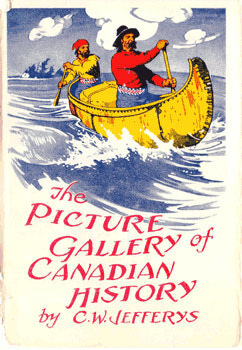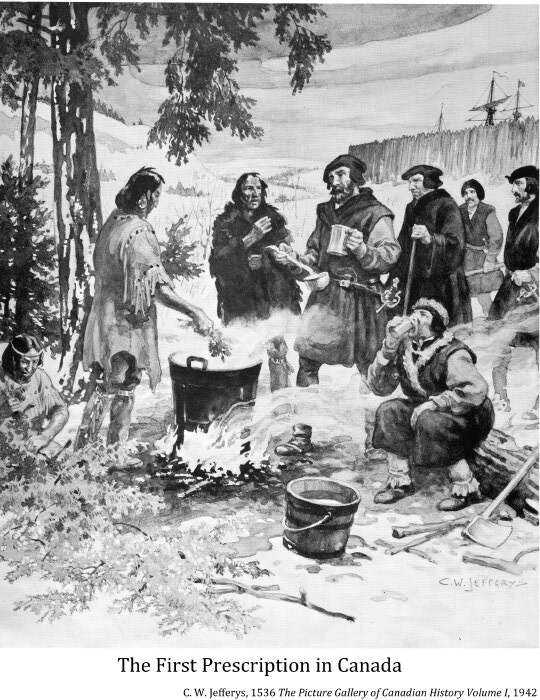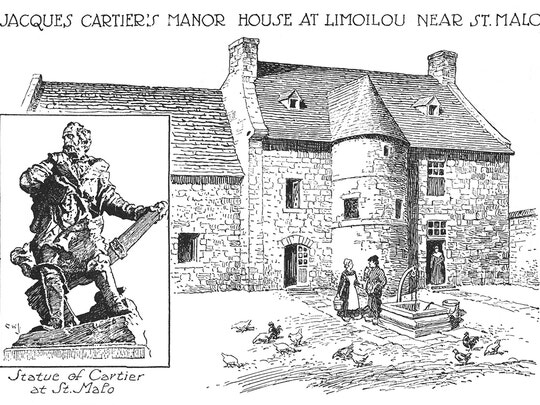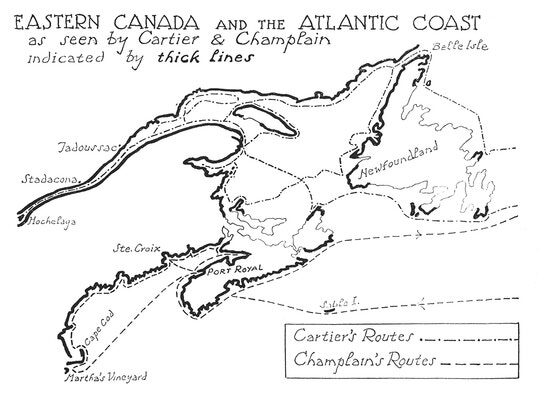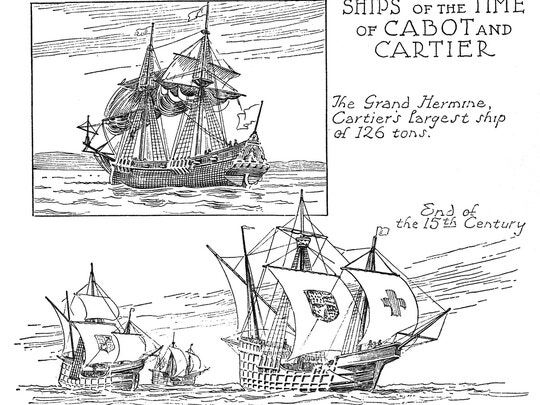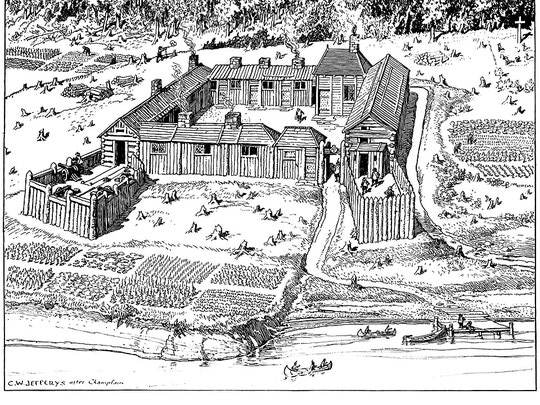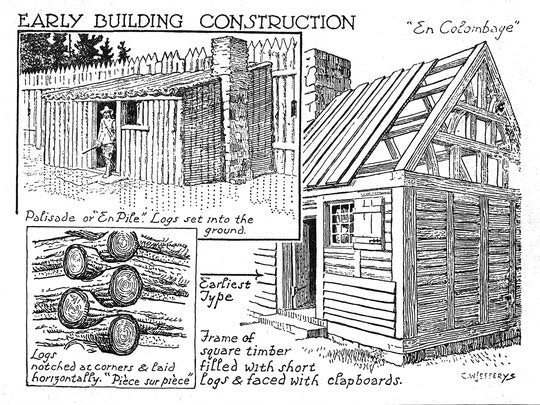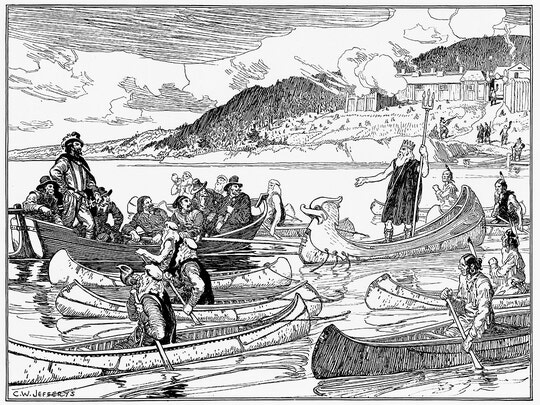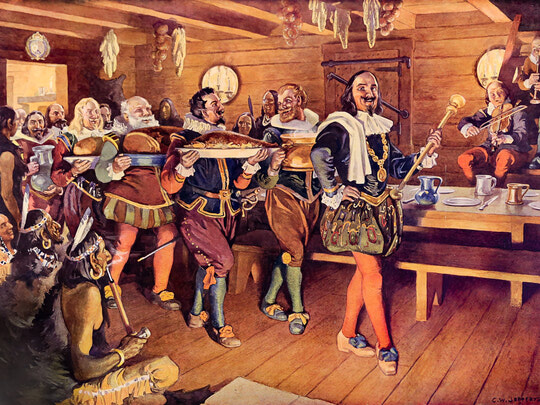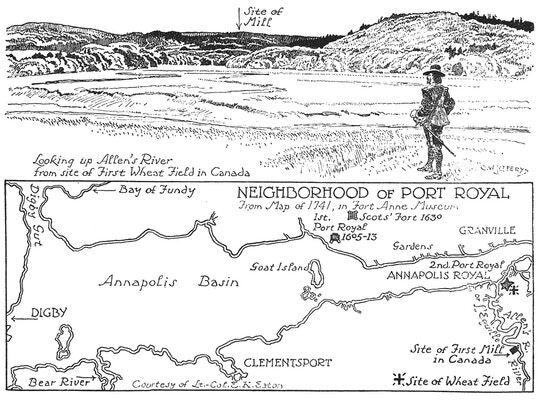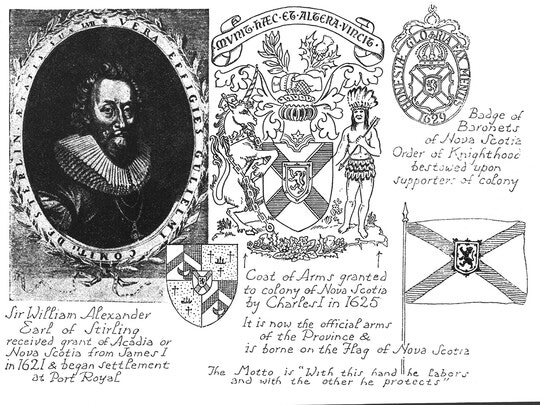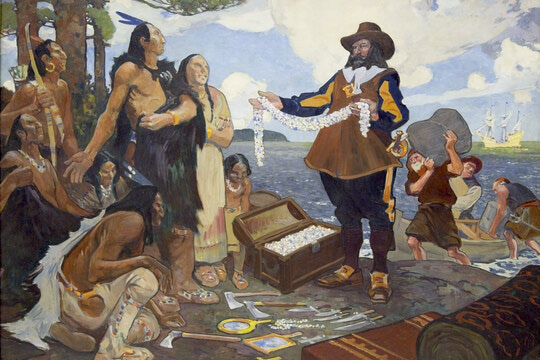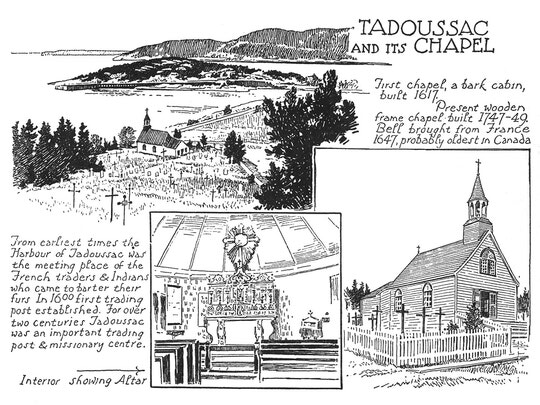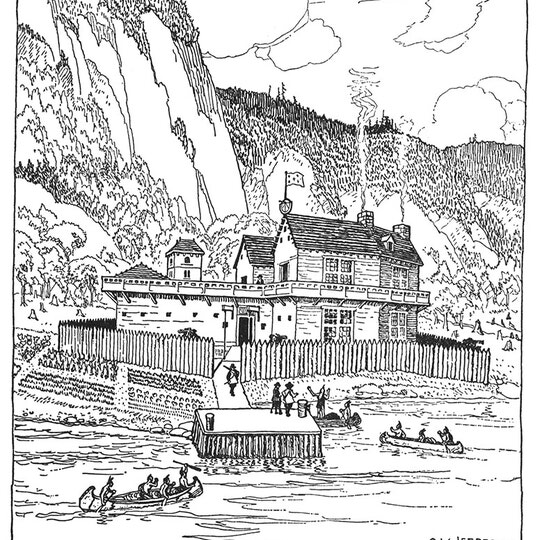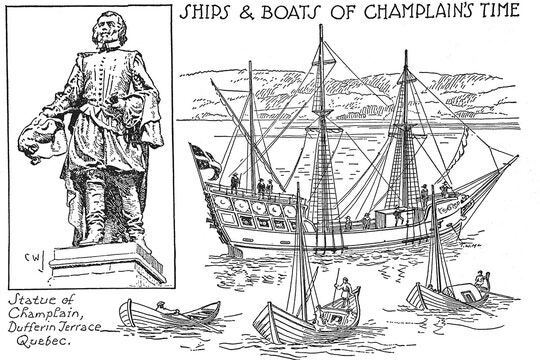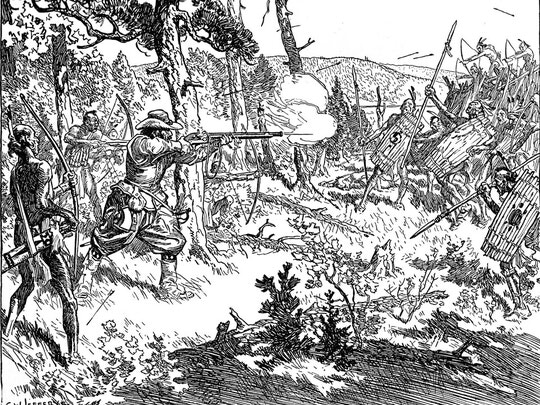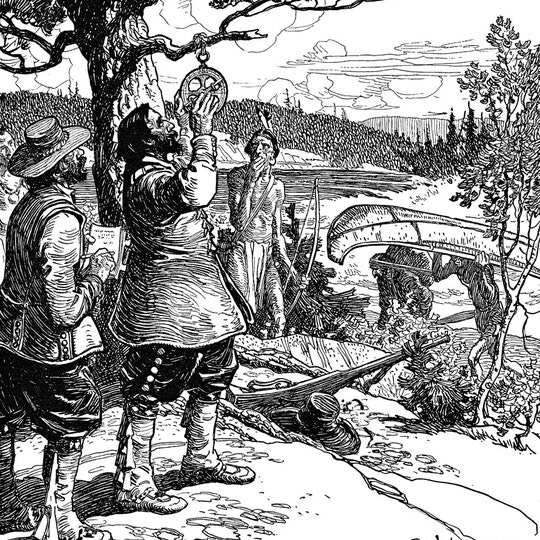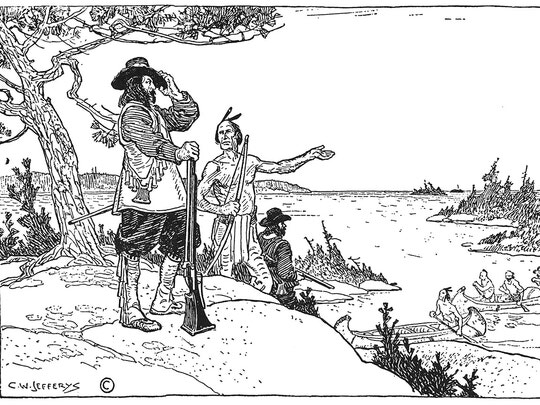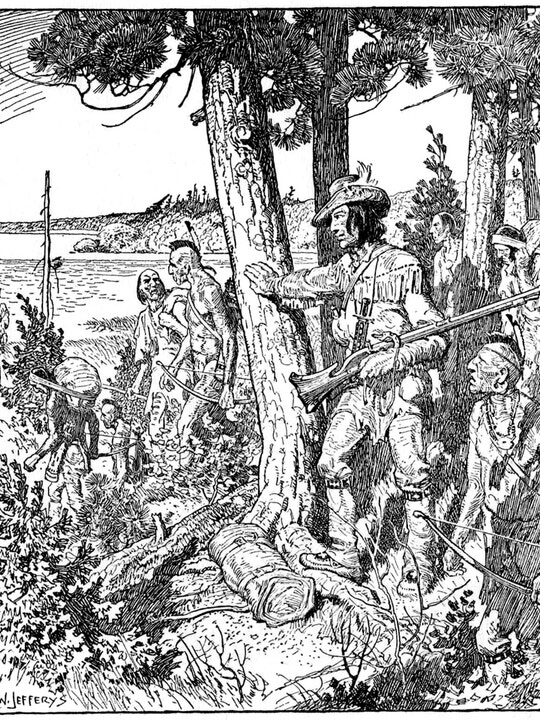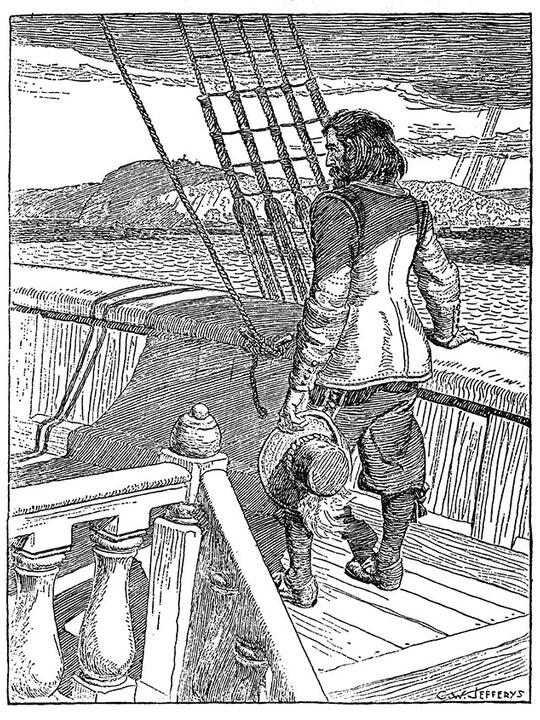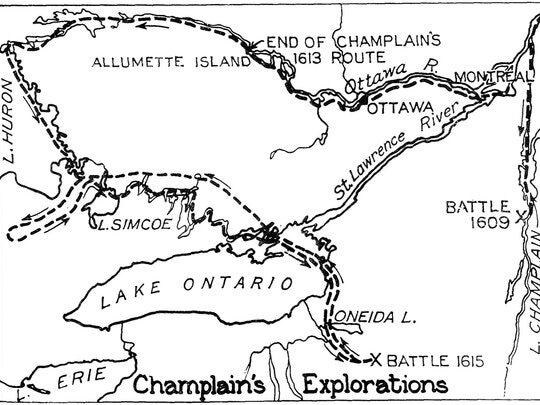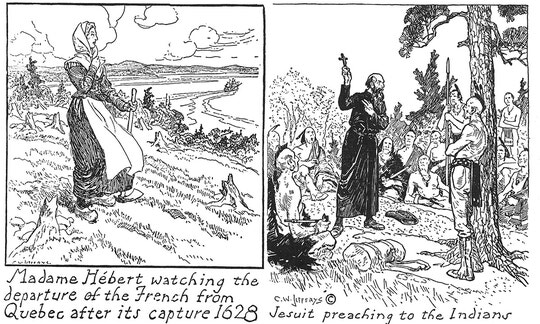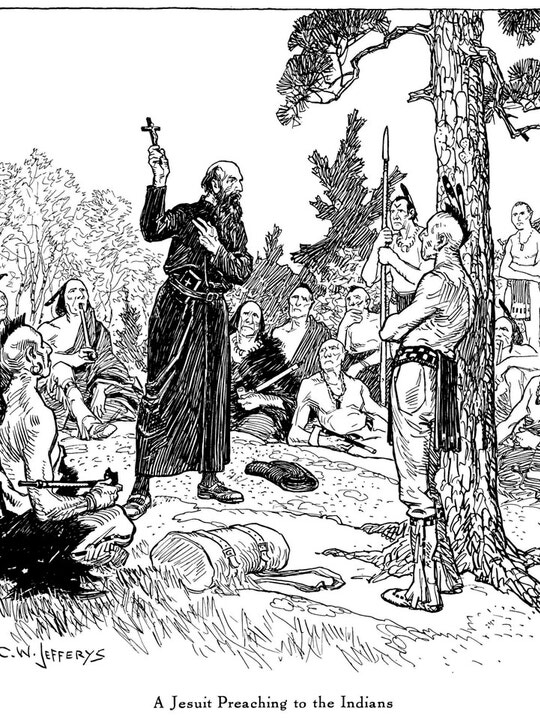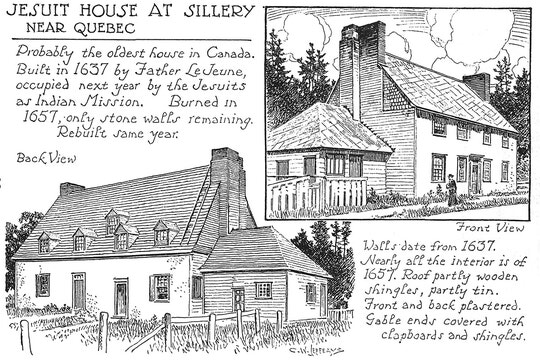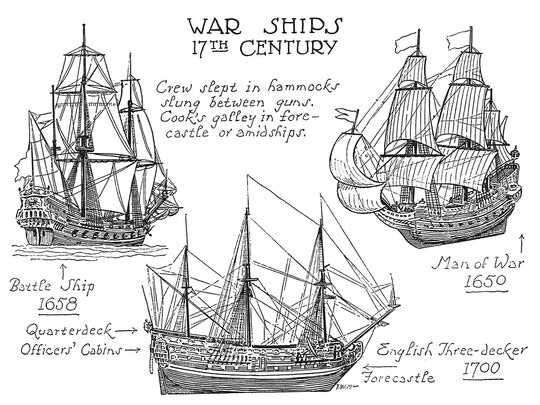The Picture Gallery of Canadian History Vol. I
Title: The Picture Gallery of Canadian History Vol. I
Author: C. W. Jefferys
Publisher: Toronto, Ryerson, 1942. 262 p. Illus.
Buy a copy online at AbeBooks
The tree was either the hemlock or spruce. Cartier at once had some of it prepared. As soon as they had drunk it they felt better and after drinking it two or three times all who were willing to use it recovered health and strength.
The map is intended to show those parts of the country that were actually seen by Cartier and Champlain. Other portions were probably visited by unknown sailors from France who left neither maps nor records of their voyages in quest of fish and furs...
The Habitation of Port Royal was the first permanent white settlement in America, north of the Spaniards. We have some scanty descriptions of it in the writings of Champlain and Lescarbot, and a few references in the Jesuit Relations...
This play, entitled The Theatre of Neptune, was performed on the 14th of November, 1606, to welcome the return of Poutrincourt, the governor, from a voyage of exploration.
In order to keep up the spirits of the colonists of Port Royal during the winter of 1606-1607, a sort of club was organized called "The Order of Good Times". Each member had to take his turn in providing the dinner...
All along the shores of the Gulf and the River St. Lawrence, during the later years of the 16th century and the first half of the 17th century, a brisk trade was carried on with the Indians for furs.
From earliest times the harbour of Tadoussac was the meeting place of the French traders and Indians who came to barter their furs. In 1600 first trading post established. For over two centuries, Tadoussac was an important trading post and missionary...
The picture, which is redrawn from the engraving in Champlain's works, is intended to show the position of the Habitation and to give some idea of the materials and the methods used in its construction.
No authentic portrait of Champlain exists. Nor have we any description of his physical appearance. The portrait which is so often seen is a copy of the likeness made by Moncornet, a seventeenth century engraver, of an entirely different personage...
It was Champlain's great desire to explore the country whence came the great river on whose banks he had planted the settlement of Quebec, and to search for a passage which would lead to the Western Sea.
In 1613 Champlain made a journey up the Ottawa River, at that time unknown to the white man. Like all early explorers, Champlain hoped that it led to the sea - that sea which stretched to the Far East of Asia.
The picture shows Champlain looking out over the lake to the west, from one of the many islands that fringe the shore of Georgian Bay, while one of his Huron guides points out the course to him.
Etienne Brule probably was the first white man to see Lake Ontario. Little is known about him, for he left no record of his own; but from scanty and scattered references...
The picture shows Champlain standing on the deck of one of the departing English vessels, gazing at the rock of Quebec where the English flag now flew over the settlement he had founded...
The conversion of the Indians to Christianity was one of the earliest and most important objects of the French in Canada. Champlain, who was sincerely pious, declared that the salvation of one soul was of more value than the conquest of an empire.

